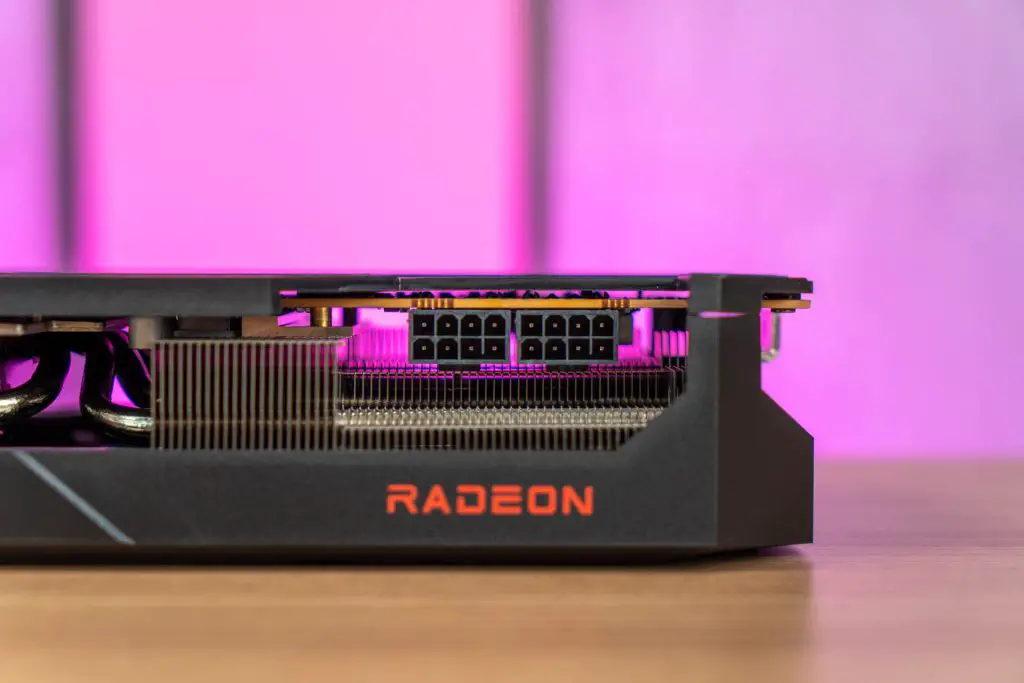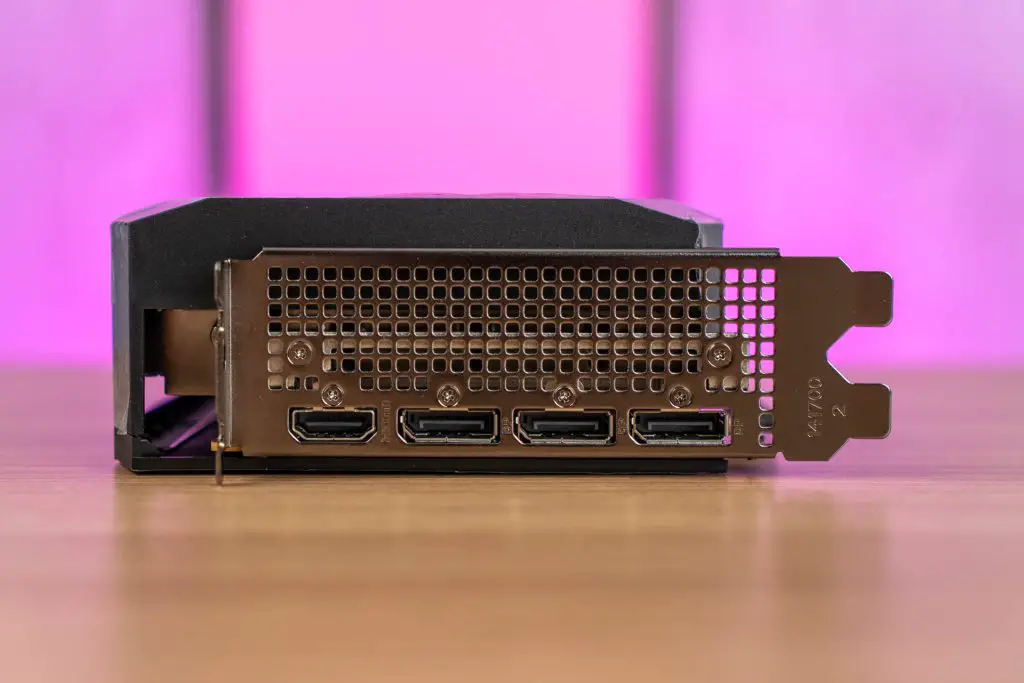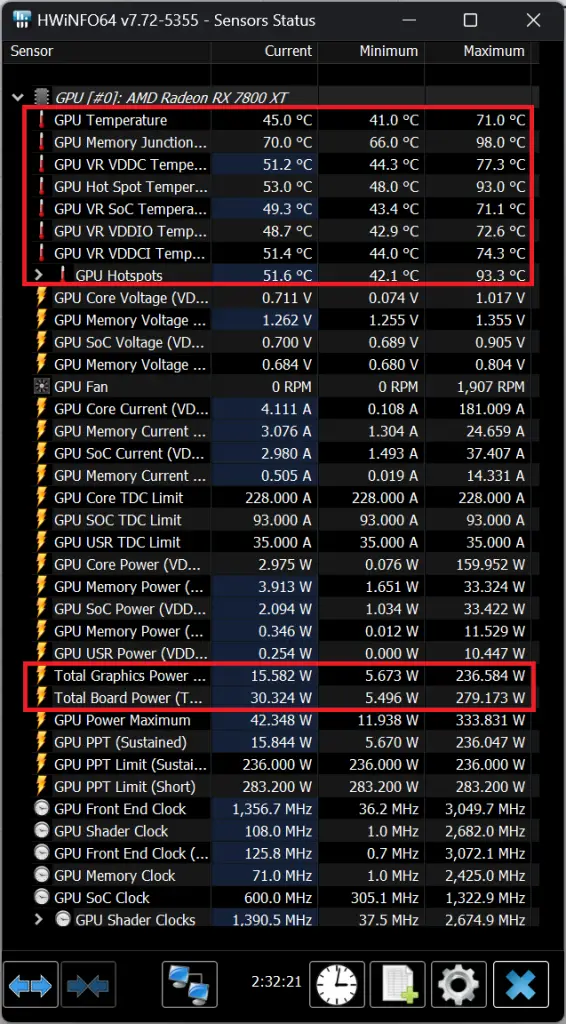Acer is a fast-growing player in the market right now. The Nitro Radeon RX 7800 XT OC 16G which we’re reviewing this time is one of the latest offerings from the company, alongside the Nitro Radeon RX 7700 XT OC 12G.
In this test, we’ve compared it against a GeForce RTX 4070, the direct competing model AMD targeted since day 1 to see what kind of performance we can expect from the RX 7800 XT.
Specifications
| GPU | Acer Nitro Radeon RX 7800 XT OC 16G | Radeon RX 7800 XT (Reference) |
| Shading Units | 3840 | 3840 |
| TMUs | 240 | 240 |
| ROPs | 96 | 96 |
| Compute Units | 60 | 60 |
| Ray Accelerators | 60 | 60 |
| AI Accelerators | 120 | 120 |
| Game Clock | 2254 MHz | 2124 MHz |
| Boost Clock | 2565 MHz | 2430 MHz |
| Memory Type | GDDR6 | GDDR6 |
| Memory Size | 16GB | 16GB |
| Memory Bus | 256-Bit | 256-Bit |
| Bandwidth | 624 GB/s | 624 GB/s |
| Effective Memory Speed | 19.5 Gbps | 19.5 Gbps |
| Bus Interface | PCIe 4.0 x 16 | PCIe 4.0 x 16 |
| Additional Power Connector | 2 x 8-pin | 2 x 8-pin |
| TBP | 260W | 263W |
| Recommended PSU | 750W | 700W |
Unboxing
This slideshow requires JavaScript.
While the Predator BiFrost Radeon RX 7800 XT OC 16G boasts a visually striking box, the Nitro version prioritizes simplicity. The essential details and features of the card are still readily available on the back of the box.
This slideshow requires JavaScript.
The card has a dual-fan cooler featuring two axial fans. While details about the cooler are limited, its overall layout closely resembles the reference design for the RX 7800 XT. Unlike some graphics cards with RGB lighting all over the place, the Nitro RX 7800 XT OC 16G embraces a minimalist aesthetic. This design choice might appeal to users who prefer a more understated look.
Even for its latest generation GPU, AMD is playing safe on the power connectors by sticking to the existing PCIe 8-pin connectors that have been around for ages. You can easily get away with a 700W power supply as long as it is a proper 80 PLUS rated power supply.
As for the output options, the Nitro Radeon RX 7800 XT OC 16G offers the usual display outputs combo of three DisplayPort connectors and one HDMI port.
System Specifications
To directly assess the performance of the Nitro Radeon RX 7800 XT OC 16G, we’ve chosen the Nvidia GeForce RTX 4070 as its primary competitor. This comparison will help us determine which card offers the better performance. Here are the specifications of the test system used:
| CPU | Intel Core i9-12900K |
| Motherboard | ASUS ROG Maximus Z690 APEX |
| Memory | ADATA XPG LANCER RGB DDR5@6000MHz CL30 (16GB x2) |
| Graphics Card | Acer Nitro Radeon RX 7800 XT OC 16GB GeForce RTX 4070 Founders Edition |
| Power Supply | Cooler Master M2000 Platinum |
| Primary Storage | Kingston KC3000 2TB |
| CPU Cooler | Cooler MasterLiquid PL360 Flux |
| Chassis | Cooler Master MasterFrame 700 |
| Operating System | Windows 11 Pro 64-bit 21H2 (Build 22000.1696) |
Gaming Benchmark – Raster Performance
We conducted tests at three distinct resolutions—1080p, 1440p, and 4K so we can have a better idea of the capabilities of both cards being put to the test.
This slideshow requires JavaScript.
Both the RX 7800 XT and RTX 4070 are capable of handling 4K gaming. However, based on our benchmarks, the RX 7800 XT shows a slight edge, particularly in titles that can leverage its 16GB worth of memory. In most titles tested, excluding Cyberpunk 2077, the RX 7800 XT easily delivers an average frame rate exceeding 60 fps at 4K resolution and is roughly 10-13% better than the RTX 4070.
This slideshow requires JavaScript.
Scaling down the resolution to 1440P, we can see why the RX 7800 XT and RTX 4070 are marketed as the best graphics cards for this resolution. We can see both cards easily deliver more than 60 fps on average on all the titles tested but again, the RX 7800 XT is still the clear winner with an easy lead of 20% on average.
This slideshow requires JavaScript.
For 1080p gaming, the RX 7800 XT and RTX 4070 are overkill, delivering frame rates exceeding 100 fps on average.
What about the ray tracing performance?
While the new Radeon RX 7000 series offers advancements over its predecessor, yet, it still faces a performance gap compared to NVIDIA’s GeForce RTX 40 series, particularly in titles optimized for those cards i.e. Alan Wake 2 and Cyberpunk 2077 at first.
Our quick benchmark for Alan Wake 2 at 1440p resolution reveals the trade-offs involved in achieving smooth gameplay. With FSR 2 on quality preset, high graphics settings, and high ray tracing (excluding path tracing), the RX 7800 XT averages 56 fps with a 1% low of 44 fps. While playable, the experience might not be perfectly smooth.
NVIDIA’s RTX 4070 achieves better results in this scenario due to its frame generation technology. Frame generation helps maintain a smoother experience by creating additional frames in between rendered ones. However, this feature was only limited to RTX 40 series cards when it was first introduced.
The announcement of FSR 3 and AMD Fluid Motion Frames (AFMF) offers promising improvements for Radeon cards. We can expect to see performance gains in newer titles, potentially narrowing the gap with NVIDIA’s frame generation technology. While ray tracing performance on Radeon GPUs still lags behind the latest GeForce RTX 40 series, FSR 3 and AMD Fluid Motion Frames (AFMF) suggest a more competitive future for AMD cards.
Thermals & Power Draw
Our power consumption and thermal testing reveal a potential area where the RX 7800 XT might fall behind the RTX 4070.
Our testing revealed a 71°C peak temperature for the GPU core under load, which falls within AMD’s specified safe operating range. However, the memory junction and hotspots reached higher temperatures, peaking at 98°C and 93°C respectively. While these numbers might raise concerns, it’s important to note that AMD considers them to be within acceptable limits.
Our power consumption testing revealed a maximum draw of 279W for the RX 7800 XT under load. Quite a gap when compared to the RTX 4070’s 203W. Using AMD Adrenalin Edition software, we were able to undervolt the RX 7800 XT and achieve performance roughly 12% higher than the RTX 4070 while matching its peak power draw. This suggests that the RX 7800 XT, at stock settings, might be less power-efficient than the RTX 4070 despite offering slightly better performance.
Final Thoughts
The RX 7800 XT establishes itself as a compelling option for gamers prioritizing 1440p resolution. While ray tracing performance still lags behind NVIDIA’s offerings, the gap is narrowing with the introduction of FSR 3 and AMD Fluid Motion Frames (AFMF). Continued advancements in these technologies could see Radeon cards offer even stiffer competition in the future.
A potential drawback of the RX 7800 XT is still its power consumption. While achieving competitive performance over the RTX 4070, it demands more power when running on stock settings. This translates to higher operating temperatures, which might be a concern for some users. This can be easily addressed by using the AMD Adrenalin Edition software and undervolt the GPU.
However, the RX 7800 XT’s price positioning is much closer to the RTX 4070 now compared to launch. While the RTX 4070 maintains a better edge in overall performance and efficiency, the RX 7800 XT’s value proposition has significantly improved. Gamers seeking a strong 1440p performer at a competitive price point will find the RX 7800 XT a worthy contender, especially with the promise of future advancements in AMD’s FidelityFX suite.














